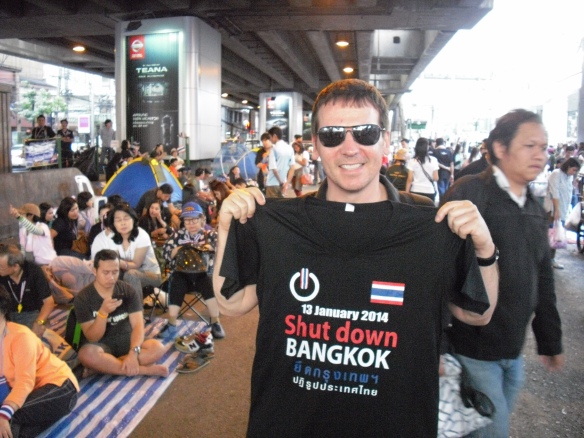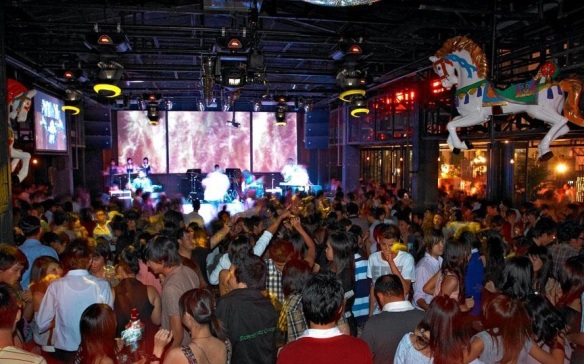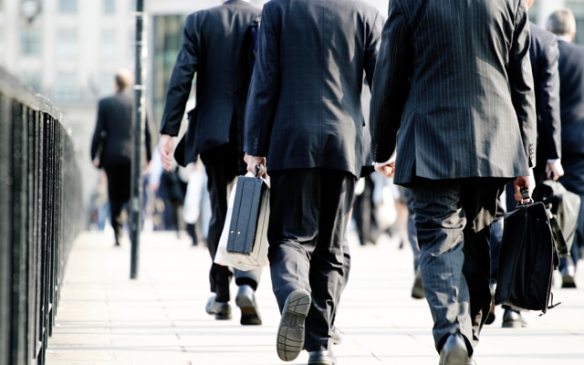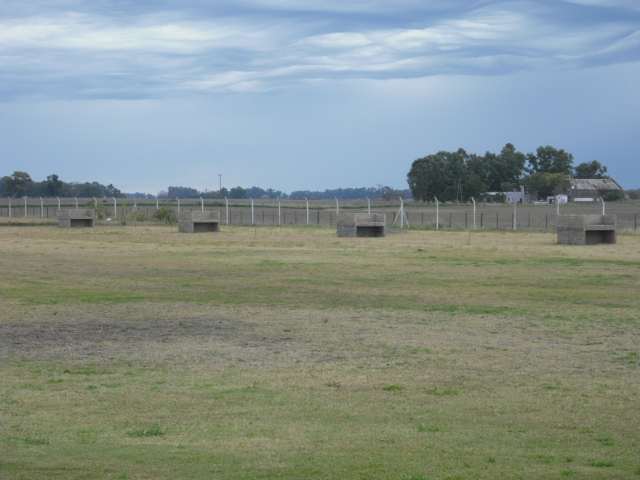“Shut down” Bangkok 2014
10 Reasons I Love Thailand
When people ask which country is my favorite to visit, I quickly respond and say, “Thailand”. Altogether, there are countless reasons why I love Thailand, but instead of listing them all I decided to simply provide my, “Top 10 Reasons I Love Thailand” list. For those that have not toured Thailand, I highly recommended a visit, as Thailand has something to offer everyone!
10 Reasons I Love Thailand:
1. Food — ‘Pad Thai’ is delicious, and its the dish most people outside of Thailand are familiar with. However, there are many more food options. For example, you have various curries, or ‘gaang’ in Thai. Massuman, a Thai curry of Muslim origin is arguably one of the most delicious Thai dishes. If fact, Massuman curry is currently #1 on CNNGo’s world’s top 50 most delicious foods! Thailand also has multiple types of noodle dishes, my personal favorite probably being rice noodles or ‘goew tiew’ served in soup. ‘Pad see ew’ and ‘rad na’ are also delicious rice noodle dishes I recommend. Papaya salad or ‘som tom’ is a must try, being it is one of the most popular salad dishes in Thailand; it is especially loved by Thai women. Of course, rice is a common staple, and it can be served with nearly everything. My favorite rice dish is ‘pad gra pow muu sab’, which is basically minced pork pan fried with basil. With this dish I usually add ‘khia jiao’ or Thai style omellete and some ‘sauce prik’ for some extra flavor. ‘Pad gra pow’ is a very common dish in Thailand that can be prepared with nearly any type of meat (chicken, beef, shrimp and even frog). I would be happy eating ‘pad gra pow’ everyday for the rest of my life! Furthermore, being that Thailand is a tropical country, there are no shortages of exotic fruits to choose from, and new visitors to Thailand will encounter fruits they have never seen or heard of before! I’m getting hungry just thinking about Thai food!
2. Bangkok Nightlife — Bangkok is rightfully well known for its seedy night life. However, if one simply ventures outside the go-go bar areas of Patpong, Nana and Soi Cowboy, they will quickly realize that Bangkok offers a modern and diverse variety of entertainment options. Live music and house bands are popular, and one can find both English or Thai music depending on the venue and area. Many of the bars on Khoasan Road, a popular back packer hangout, offer live music in English. Yet, I prefer venturing out of tourist areas and finding more local establishments, such as those found around Thonglor and Ekkamai. Dance clubs and discos are also popular, and many places routinely feature international DJs. Bedsupper Club on Sukhumvit soi 11 and Route 66 at RCA are well established hangouts, both popular with expats and locals alike. Of course, if you prefer a meal while watching sports, there are plenty of English and Irish style pubs to be found throughout the city, especially in the expat areas around lower Sukhumvit.
3. Weather — Hot, Hotter, and Hottest are the proclaimed three seasons in Thailand! Thailand is a tropical country, so it is basically hot year round. Since its located near the equator, Thailand receives constant solar radiation year-round. Therefore, monsoon season withstanding, which brings heavy rainfall from August to October, Thailand offers perfect weather for traveling or holiday.
 San Phra Phum with San Joa Thi
San Phra Phum with San Joa Thi
4. Ghosts and Spirit Houses — Many Thais believe in the supernatural (a purported 80%). Therefore, spirits and ghosts are believed to be present throughout the Kingdom. Spirit houses are structures found throughout Thailand, which are intended to house ancestral or protector spirits. The urban landscape of Bangkok and the rural countryside is littered with spirit houses, showing that many Thais have retained their traditional spiritual beliefs despite modernization. Altogether, the belief in the supernatural is a part of everyday life, making Thailand an even more unique and amazing place!
 Tuk Tuk near the Chiang Mai train station
Tuk Tuk near the Chiang Mai train station
5. Tuk Tuks or Auto Rickshaws — Tuk Tuks are a popular form of transportation in Thailand, used in both rural areas and in traffic congested urbarn districts. Just imagine a three wheel cart speeding down the road humming like a turbo charged riding lawnmower! Tuk Tuks are both adventurous and fun! Plus, since meters are not used by Tuk Tuk drivers, you usually must haggle over the price of the trip, which provides a great way to interact with locals (and a good opportunity to practice Thai if you like). But be careful, because some Tuk Tuk drivers will gauge tourists and overcharge, they are also known to run scams, although I have never encountered any problems with Tuk Tuk drivers myself.
 Phi Phi Leh
Phi Phi Leh
6. Beaches –Thailand has some of the best beaches in the world! Plus, Thailand offers many different types of beaches; from laid back and quiet to busy and raucous! People looking for partying and nightlife should head to Patong Beach, Phuket, Haad Rin, Kho Pha Ngan, or Pattaya. However, those looking for a more relaxing beach experience should avoid these places, and make their way to smaller and less known beaches like Kho Mun Nork, Hat Khao Lak, or Kho Maak. If your in Bangkok, and looking for convenience then Hua Hin and Kho Samet are arguably the best options. Personally, I think Koh Chang is a good beach destination as it offers both nightlife and secluded beaches. With so many available options, Thailand is a beach lover’s dream!
 Thai Massage
Thai Massage
7. Massage — Even though Thailand is well known for its somewhat seedy massage parlors, especially those catering to Japanese and Western tourist; the mass majority of massage spas and shops only offer non-sexual traditional style massages. When receiving a Thai massage, spas usually provide loose fitting robes to be worn during the session. This is basically mandatory because traditional Thai massage requires a lot of movement and position making. A typical Thai massage session lasts two hours, and includes stretching and massaging the entire body. Usually no oils or lotions are used for traditional Thai massage, although some spas do offer oil massage or foot massage. Typically massages are much cheaper in Thailand when compared to Western countries. Although price varies, most massage shops will charge around 200-250 baht an hour, or around $15 for a two hour session plus tip. Of course you can pay a little less for a massage in Thailand, but you can also pay a lot more depending on the quality of the massage shop and the services provided.

Thai Alphabet
8. Thai Language — “Sawatdee Khrup!” is how you say hello in Thai, or you can say “Sawatdee Kaa!” if you are a girl. Thai is a challenging but fun language to learn. It is a tonal language, with five phonemic tones: mid, low, falling, high, and rising. When learning to speak Thai it is best to listen to native speakers and attempt to copy their speaking tones! However, tones are difficult to pronounce correctly, especially for Westerners, since almost all European languages are non-tonal. The Thai alphabet is syllabic, consisting of 44 basic consonants, which represent 21 different constant sounds, each with its own inherent vowel. There are also 18 other vowels, plus diphthongs, which can appear in front of, above, below or after the consonants they modify. Also, similar to many Asian languages, Thai varies according to the sex and relative status of speaker and audience. Overall, Thai is a very complex language! But don’t worry, many Thais, especially younger ones, speak English very well! Therefore, communicating with locals should not be a major concern for first time visitors.
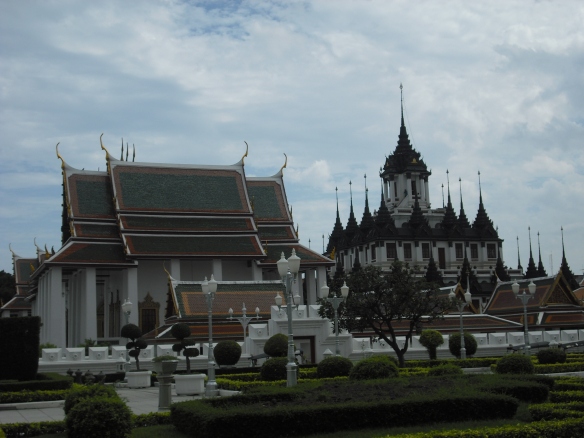 Wat Ratchanadda and Loha Prasat
Wat Ratchanadda and Loha Prasat
9. Temples or “Wats” — Thailand is predominantly a Buddhist country, therefore “Wats” or Buddhist monasteries are prevalent throughout the kingdom. “Wats” are sacred spaces, and generally serve as a place of worship for Thais. “Wats” typically provide buildings or quarters for monks to reside, and usually the main or centerpiece structure houses at least one large Buddha statue or image. Chedis or stupas are also generally found within the temple complex grounds. Generally, “Wats” are peaceful and relaxing places to visit, and many offer overnight stays and meditation classes. Overall, there are over 40,000 Buddhist temples in Thailand, so there is no shortage of “Wats” to visit!
10. Thai people — There is a reason Thailand is called the “Land of Smiles”. Thais are usually very friendly and hospitable. Plus, Thais are all about “sanook” or having fun! People make a place, and the citizens of Thailand definitively contribute by making their country a beautiful and amazing destination!
Related Articles:
>>> 13 reasons why I love Thailand
>>> 11 Reasons Why I Love Thailand
>>> 108 Reasons I Love Thailand
If you love Thailand let me know why, and leave a comment below!!!
The Study of Distant Places
Gangnam Style Thailand
Due to the popularity of the “Gangnam Style” video, it was only a matter of time before parody videos were made and available on YouTube. One of the most popular parody videos is about Mitt Romney; another parody features the Oregon Duck’s mascot, which is a good laugh. Unsurprisingly, some parodies feature a different language, such as Chinese or Spanish, or even Thai like the parody video featured above. Enjoy!
Chiang Mai, Thailand: Visual Cues of Globalization

Ronald McDonald giving the traditional Thai "wai" or greeting gesture. A great example of hybridization in Thailand.
Additionally, hybridization, or the melding of local culture with Western culture, is also common throughout the world, and again Thailand is no exception. Indeed, Thailand is a country that has been influenced by many cultures and outside influences, such as East Asia, South Asia and the West. Furthermore, Thai people are considerably tolerate and fairly open, and Thais have a history of adopting elements of outside culture and melding it with their own.Visual cues of globalization, such as visible evidence of western or outside influence, is prevalent throughout the developing world. Especially in urban areas and tourist zones. For example, the urban landscape of Bangkok, the capital of Thailand and the main mega-city of Southeast Asia, is particular globalized, with western franchises and services available throughout the city. KFC, McDonald’s, and Subway are just a few of the main franchises found in Bangkok. Plus, major global retailers such as Carrefour and Metro also operate in the city.
Chiang Mai is the second largest city in Thailand, and when compared to Bangkok it retains a more traditional Thai cultural identity. Specifically the “Lanna” culture or Northern Thai tradition flourishes there. However, the city is progressively modernizing as it grows in size and more tourist visit each year. Although, not globalized or westernized to the extent of Bangkok, visual cues or evidence of globalization and hybridization can be found throughout Chiang Mai, Thailand.
Below are pictures from Chiang Mai, that serve as examples of visual cues of globalization and hybridization in Thailand.
7-Elevens are popular in Chiang Mai. In fact, 7-Elevens are popular throughout Thailand; 6,000 of them can be found scattered across the kingdom. Only Japan and the U.S. have more 7-Elevens, at around 13,000 and 8,000 respectively.
Pizza Huts are also popular in Thailand, but the toppings for the pizza are quite different from those found in the United States. The pizza above is a seafood special, covered with shrimp and oysters.
Carrefour is a French retailer that operates over 30 stores in Thailand. Carrefour also has stores in other countries in Asia, such as China, Taiwan, Indonesia and India.
KFC is relatively popular, but I avoid these places like the plague whether I’m overseas or at home. No thanks! I’ll skip on the freak genetically engineered chickens!
Nothing like a DQ blizzard to cure one’s ice cream craving!
Of course one cannot travel far, even overseas, without finding a Starbucks!
Miguel’s “Real” Mexican Food! Even Latin America is represented in Chiang Mai!
Vietnamese food in Thailand! Although Vietnam is located in Southeast Asia, it has only been the last few years that Vietnamese food has become popular around the region.
Shabu-shabu is the Japanese version of hot pot, and it is considered a healthy cuisine option. 
Visual cues of globalization can even be found at some of Chiang Mai’s temples. Look closely? What do you see in the circle?
A statue of Donald Duck eating noodles! Hybridization? A Disney cartoon character eating a bowl of noodles?
For reference, Chiang Mai is located in the Northern region of Thailand, approximately 450 miles from the capital of Bangkok.
Rob’s Positive Living “Top 10” To Do List
Rob’s Positive Living “Top 10” To Do List
1. Start your day with something positive. Watch a funny video clip or listen to your favorite song. Read a positive quote or passage and share it with your friends via email or facebook.
2. Get rid of the haters and avoid negative people like the plague. They will only bring you down and steal your positive energy.
Remember! People will try to rain on your parade because they don’t have a parade of their own.
3. Do something that gives you confidence and makes you feel and look good. Improve your diet, get 8 hours of sleep or more, exercise at least three times a week, and wear clean, good looking clothes.
4. Avoid negative images and videos. Turn off violent movies and television. Don’t watch local news. Only negative stories are reported.
5. Create your own positive work and living environment. Rearrange your furniture periodically and keep things clean and orderly. Add something positive and relaxing to your space (framed posters or plants).
6. Learn a language or do something new and challenging. Listen to language CD’s in your car or download language lessons on your IPOD. Take some dance lessons or study martial arts.
7. Surround yourself with ambitious and successful people. Go out of your way to make friends with positive and helpful people. Then learn from them.
8. Smile and laugh all the time. Avoid entering a room with a frown. A smile represents kindness and friendliness. Laughing releases positive endorphins.
9. Avoid negative language and outlook. Always think and speak positive. Pessimism is unattractive and unbecoming. Don’t spread negative energy.
10. Set GOALS! Write a list of the things you want to accomplish. Do something everyday that moves you closer to realizing your goals.
Related Articles:
>>> Top 10 To-Do’s for a Positive Life
Buenos Aires: City of Urban Art and Graffiti
Latin America has a long tradition of graffiti or street art, and Buenos Aires is no exception. Throughout Argentina the line between urban art and graffiti is often blurred, especially in the capital city. On the same block one can find a commissioned mural next to graffiti tagged walls. Urban art can be found in nearly all the barrios of Buenos Aires, making the urban landscape unique and edgy.
Altogether, Buenos Aires has a prominent and growing art scene, plus police and residents are somewhat tolerant and liberal about graffiti in general. Therefore, it only makes sense that urban art is so prolific on the streets and in public.
So, if you find yourself in Buenos Aires or another Latin American city, don’t be alarmed or surprised by the prevalence of urban art and graffiti. Instead, enjoy the refreshing and eclectic art of the streets!
Below are pictures taken in the barrio of Palermo in Buenos Aires. 
You have to love the Micheal Jackson stencil art.
The themes of urban art varies, but popular music, sport and politics are main influences.
“I want to go!” this design would look great on a t-shirt!
Happy Beer!
WTF!
What others have said on this topic:
Drink Mate and Make Friends!
Of all the experiences I enjoyed during my travels through Argentina, drinking mate with new friends is one I cherish and miss the most!
For those not familiar with mate, it is an infused drink made from steeped yerba mate leaves, and it is mostly consumed by people living in the southern cone region of South America (think Argentina, Chile, Paraguay, Uruguay and southern Brazil).
Mate is typically served in a hollowed out gourd with a metal straw. The taste of mate is difficult to describe, but it is similar to bitter Asian green tea. Some people add sugar or honey to make mate drinks sweeter, but most drink mate “straight”. Your first drink of mate can be a shock to the taste buds, so altogether, I would consider mate an acquired taste!
Yet, regardless of the taste, drinking mate can be a unique social experience. And although, mate can be consumed alone, it is often times shared between friends or family at social gatherings.
Furthermore, there is a certain protocol followed when drinking mate. Usually, one person is responsible for filling the gourd and passing it to friends. The drinker or receiver of the mate is expected to empty the gourd before returning it to the server. This process of the server filling the gourd and distributing it to the drinkers continues until the mate becomes “flat” or weak. Then the server discards the used yerba leaves and refills the gourd with fresh yerba. Drinkers just simply consume, however one must remember social etiquette, because the main taboo of mate is “bogarting” or holding the drinking gourd too long while others are waiting.
Overall, drinking mate is a great way to meet new people and learn about Latin American culture. During my travels in Argentina I drank mate almost daily, and often times with complete strangers, despite the language barrier. So, if you travel to the southern cone of South America, don’t be surprised to find yourself with a mate gourd in your hand! And even if the taste of mate does not suite your liking, I recommend accepting all offers to share mate, you will make more friends for doing so!

Drinking my first mate!

Eeny, meeny, miny, moe! The main problem with mate is trying to figure out which brand to purchase at the grocery store!
Bolivar, Argentina: A City Tour
The main cathedral in the historical city square of Bolivar, Argentina.
While traveling with Rotary International through Argentina I stayed in many small towns throughout Buenos Aires province. During my stay in Bolivar my group and I enjoyed an official tour of the city, which allowed us to see various places throughout the city. Experienced tour guides were provided by the city and of course some of our local hosts from Rotary came along as well.
Overall, Bolivar is a relatively small city that is located about 3-4 hour drive south of Buenos Aries. Bolivar has around 30,000 inhabitants. The people of Bolivar are extremely friendly and hospitable, just like most the people we visited in Buenos Aires province.
Below are pictures from my tour of Bolivar, Argentina. Enjoy! 
A closer look at the main cathedral.
Inside the cathedral during church services. I think a child was being baptized.
The town square or plaza. The majority of towns in Argentina have a town square with beautiful open green spaces. You can usually find people hanging out in the square sharing Mate or having some food. On Sunday most town squares are packed full of people!
Statue of San Martin. Each town also has a large statue or memorial to San Martin. He was an Argentine General and main leader that fought against Spain for independence (think George Washington). Basically, he is a national hero in Argentina, and his image is found everywhere! There are San Martin statues, paintings and even his image can be found on the Argentine 5 peso note.
The tour guides explained that around the turn of the last century the government ordered 10 San Martin statues (same as the one in the picture) but 100 were produced by mistake. So, this same exact statue can be found in different city squares throughout Argentina!
This is the “Tango” man who is also located in the center of town (you can see the statue of San Martin in the background).
A piano located in the lobby of the historical Spanish Theater house in Bolivar.
Inside the Theater.
There was intricate decorative molding throughout the theater.
Arches for the gateway to the main park located on the outskirts of the city center.
This is a large sporting complex in Bolivar that is mostly dedicated to volleyball. Surprisingly, volleyball is very popular in the city!
These are asado grills located outside the volleyball center. Just an example of how you can find or see asado grills scattered throughout the landscape in Argentina!
Written by Robert Garrett. Originally posted at Okies in Argentina on May 25, 2011
Buddharupas of Chiang Mai, Thailand
A Buddharupa is simply a statue or image of Buddha. Of course there are regional differences in Buddha images. In East Asia, such as China and Japan, the Budai or “happy” Buddha, which is rotund with a big belly, is most common. The Budai is originally derived from Chinese folklore. However, in Southeast Asia and India Buddha statues and images are thinner and more closely represent Gautama Buddha.
Buddharupas of Southeast Asia have some common characteristics. First, they almost always have a elongated fingers, toes and earlobes. Perhaps not coincidentally, elongated earlobes in Thailand are usually considered lucky or attractive. Another standard feature of Buddharupas is a pointy crown or head and broad shoulders. Generally, Buddharupas are golden or brass in color, although white or marble Buddhas can also be found.
Southeast Asian and Indian Buddharupas are usually in a cross-legged meditation pose, although reclining Buddhas are also common. Overall, Buddharupas are an integral cultural feature of Thailand and Southeast Asia in general.
Below are pictures of Buddharupas taken near and around Chiang Mai, Thailand.
A typical scene within a Thai “Wat” or temple. Notice there are several images of Buddha.
This Buddharupa is marble or white, but visitors give a donation and then place golden foil on the body of the statue. Overtime the Buddha will eventually become completely covered in gold. This Buddharupa is located in the famous Doi Suthep temple near Chiang Mai.
Buddharupas can be found both inside and outside.
The main Buddha statue inside Wat Srisuphan.
Buddharupas can often be found next to sacred trees.
Elephants figurines and statues are extremely common in Northern Thailand. Often times elephant figurines will be found around Spirit Houses.
Here a young monk burns incense inside the main temple.
Here is a Buddha statue located in a smaller temple near Wat Bupparam in Chiang Mai.
If you look closely you can see pictures of Thai royalty. Images of Thai royalty, even within temple complexes, is extremely common throughout Thailand.
The main Buddha statue within a temple is typically accompanied with other Buddha images and decorations.
More Buddha statues.
And even more Buddha statues!

